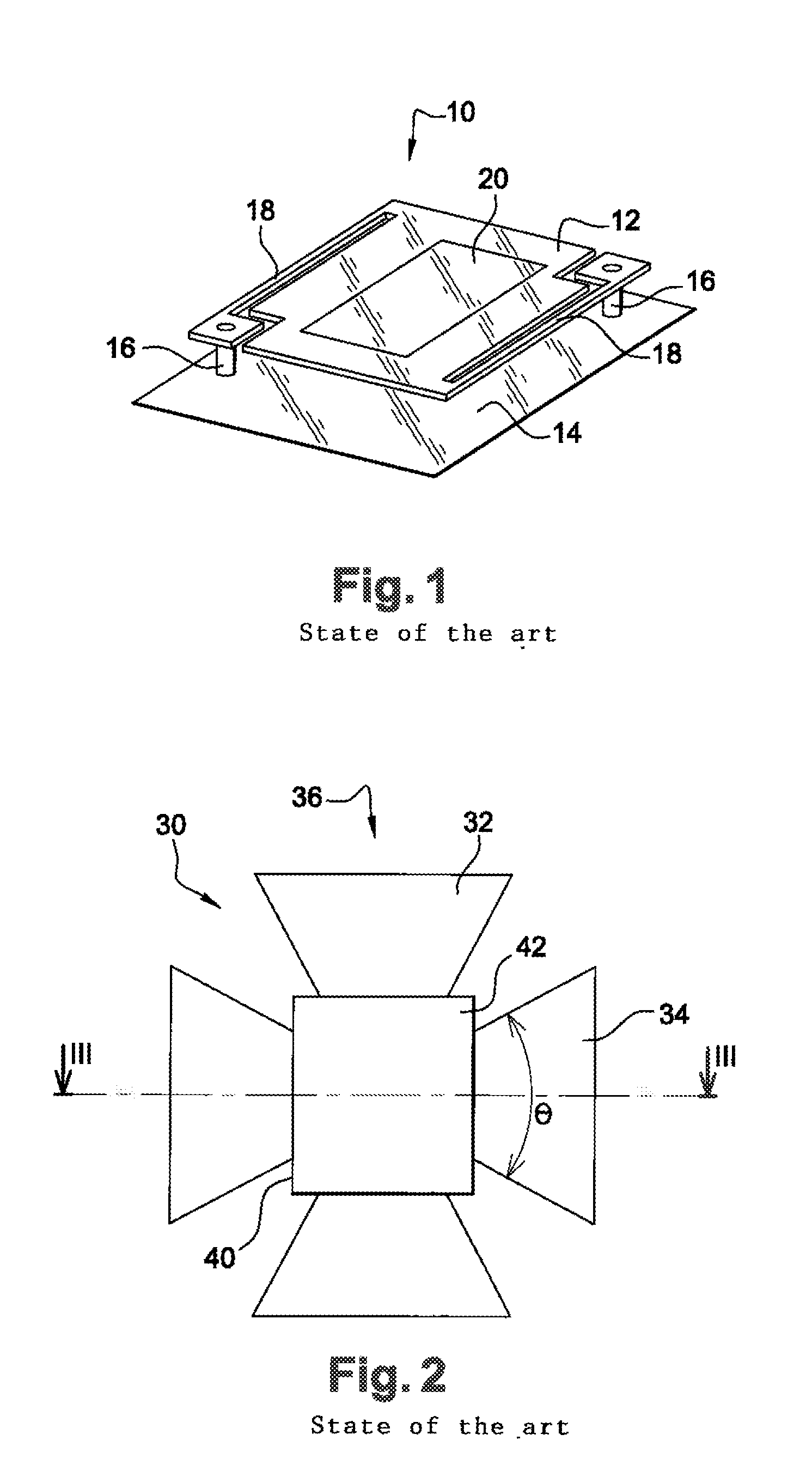Bolometric detector of an electromagnetic radiation in the terahertz range and array detection device comprising such detectors
a detector and electromagnetic radiation technology, applied in radiation pyrometry, instruments, material analysis, etc., can solve the problems of inability to capture all electromagnetic power, inability to receive electromagnetic power by a single antenna, and inability to efficiently compensate.
- Summary
- Abstract
- Description
- Claims
- Application Information
AI Technical Summary
Benefits of technology
Problems solved by technology
Method used
Image
Examples
first embodiment
[0107]For this purpose, in a first embodiment illustrated in FIGS. 10 to 12, a reference bolometer 120 according to the invention is identical to sensitive bolometer 50 illustrated in FIGS. 6 to 8, but for the fact that:[0108]first antenna 54 of sensitive bolometer 50 is replaced with a layer 122 reflecting with a 180° phase shift the radiation incident on microbridge 56 and crossing it, advantageously a metal layer, deposited on insulating substrate 52 under and around microbridge 56. Advantageously, the layer is made of the same material as antenna 54 and has a thickness preferably identical to that of antenna 54 of the sensitive bolometer. The dimensions of metal layer 122 are selected to be at least equal to the projected surface area of microbridge 56;[0109]distance e between metal layer 122 and microbridge 56 which places microbridge 56 of reference bolometer 120 in a destructive interference fringe between the radiation incident on layer 122 and the radiation reflected with a...
second embodiment
[0111] the reference bolometer differs from reference bolometer 120 in that resistive load 66 is omitted.
[0112]According to a third embodiment, the reference bolometer differs from reference bolometer 120 in that the resistive load is shorted. The absence or the shorting of resistive load 66 thus enables to reject possible resonance resulting from a patch antenna behavior, outside of the active detector operating range, while providing substantially identical results in terms of infrared absorption than the first embodiment.
[0113]The embodiments just described have the advantage of providing a reference bolometer having a very small number of differences with respect to the sensitive bolometer, which especially enables to manufacture these bolometers jointly by means of the same manufacturing techniques. Of course, the reference bolometer may differ by greater proportions from the sensitive bolometer. For example, the reference bolometer may advantageously have no resonant cavity 80...
PUM
 Login to View More
Login to View More Abstract
Description
Claims
Application Information
 Login to View More
Login to View More - R&D
- Intellectual Property
- Life Sciences
- Materials
- Tech Scout
- Unparalleled Data Quality
- Higher Quality Content
- 60% Fewer Hallucinations
Browse by: Latest US Patents, China's latest patents, Technical Efficacy Thesaurus, Application Domain, Technology Topic, Popular Technical Reports.
© 2025 PatSnap. All rights reserved.Legal|Privacy policy|Modern Slavery Act Transparency Statement|Sitemap|About US| Contact US: help@patsnap.com



